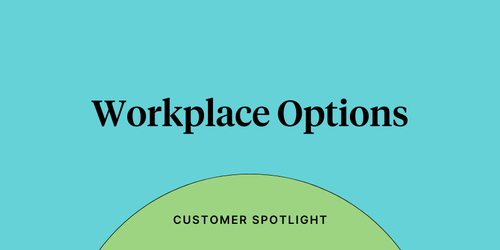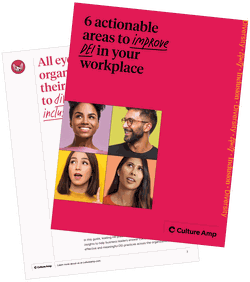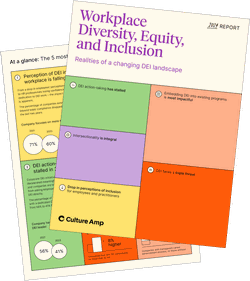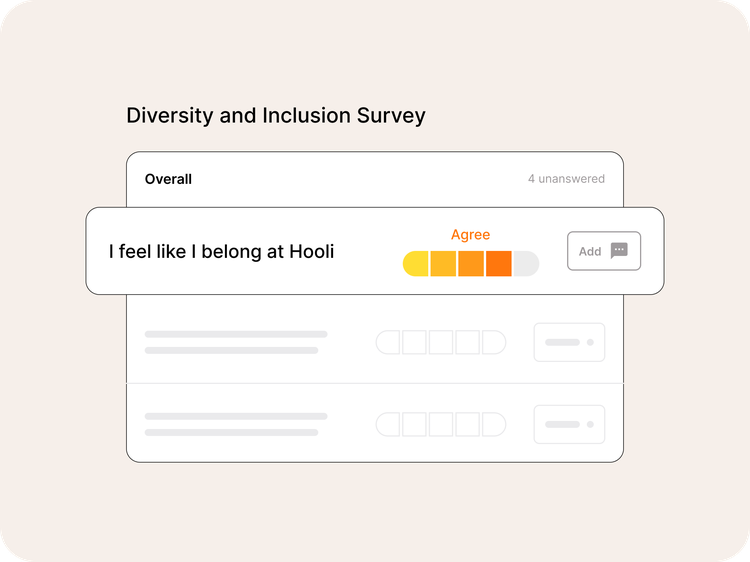
Article

Workplace diversity is taking the HR world by storm. More than ever, employers are prioritizing diversity, equity, and inclusion (DEI) initiatives and investing resources to build safer, more equitable workplaces where every employee is set up to thrive. Leaders now realize that focusing on DEI is not only the smart thing to do for their business – but also the right thing to do as a human being.
In this post, we’ll outline the tangible and intangible benefits of workplace diversity, the challenges that come with it, and what you can do to get started on related initiatives today.

Diversity in the workplace refers to an organization that intentionally employs a workforce comprised of individuals with a range of characteristics. These characteristics include:
Numerous studies have shown that prioritizing a diverse and inclusive company culture leads to many benefits both from an internal and external perspective. However, implementing diversity initiatives at work isn’t without its unique challenges. In the sections below, we’ll review both sides of the equation.

Below, we share five examples of how prioritizing workplace diversity and embracing inclusivity and equity can drive benefits to your people, culture, and business:
When you hire people from different backgrounds, nationalities, and cultures, you bring fresh perspectives. This can lead to benefits like better problem-solving, innovative new ideas, and increased productivity. Think of it as a scavenger hunt: will you find more success by gathering a team that thinks alike and sending them in the same direction? Or will you gather information more quickly by having a strategically split team with different strengths and ways of thinking?
We’ve found that some hiring managers find it intimidating to bring new perspectives into the company. They may fear potential awkwardness, the introduction of unpopular opinions, or conflicting work styles. But rest assured: research has shown that diverse teams exhibit a 60% improvement in decision-making abilities, as well as higher productivity and better problem-solving.
Diversity hiring is a recruiting practice designed to mitigate the impact of unconscious biases on the hiring and recruiting process. When done well, diversity hiring helps ensure that candidates are assessed based on their skills and experiences rather than characteristics unrelated to their performance – a particularly potent form of workplace discrimination. Ultimately, this broadens the hiring pool and increases the likelihood that qualified, talented candidates aren’t slipping through the cracks due to biases in the hiring and recruiting process.
Moreover, employees are no longer simply seeking a 9-to-5 job that pays well. They’re looking for space where they can grow, feel accepted, and be challenged. That’s why a company that embraces diverse and inclusive hiring practices generally has a better reputation and improved employer branding. For example, a 2020 Glassdoor study found that 76% of employees and job seekers report that a diverse workforce is essential when evaluating companies and job offers. On top of that, the millennial and Gen Z generations are the most diverse in history – only 56% of the 87 million millennials in the country are white, compared to 72% of the 76 million members of the baby boomer generation.
For all these reasons and more, prioritizing diversity in the workplace better sets organizations up to attract the best talent.
Workplace diversity leads to innovation. If you think about it, the correlation makes sense. If you have a homogenous group of people, it is likely that everything – from their thought patterns to life experiences to problem-solving skills – is also likely to be similar. And sameness doesn’t lead to creative solutions, which is a huge reason why we advocate strongly for embracing neurodiversity in the workplace. On the other hand, a heterogeneous, diverse team will contribute unique perspectives that can lead to breakthroughs in thought.
It’s the same reason companies go offsite for important strategy meetings, or why a change in pace can help you solve that problem you’ve been stuck on for days. New circumstances and environments are known to spark fresh ideas. A recent study also found that companies that score well on indicators of diversity tend to be demonstrably more innovative – providing another solid piece of evidence for why companies should embrace diversity in the workplace.
Diversity, equity, and inclusion go hand-in-hand with employee retention, engagement, and performance. When you create a work environment where employees see a representation of various cultures, different backgrounds, and diverse ways of thinking, they’re more likely to feel comfortable being themselves and feel like they belong. This, in turn, leads to happier, more productive and committed employees.
The data backs this up, too: A study by McKinsey found that companies with the highest levels of gender diversity experienced 15% less turnover among female employees and 25% less turnover among male employees. Similarly, Culture Amp’s people scientists found that employees who strongly believe the organization doesn’t value diversity are more than three times more likely to leave in a 12-month period.
On the other hand, research has found that a strong, homogeneous culture can stifle natural cognitive diversity due to the pressure to conform. Employees who don’t feel like they can be themselves at work are more likely to fear rejection and not produce their best work. It’s why we also advocate for creating psychologically safe workplaces where employees feel empowered to speak up, make mistakes, and propose bold ideas. In that way, embracing diversity can help you keep your top-performing employees engaged and retained.
Many studies show diverse teams simply perform better and, as a result, bring in more profits. For example:
Clearly, the data shows that embracing workplace diversity does indeed pay off.

Learn how to make the business case for DEI, including best practices and tip for maximizing the impact of your initiatives.
However, building a diverse workplace certainly comes with its unique challenges. Here are five of the most common challenges employers face in their DEI journey, and suggestions on how to overcome those challenges.
Implementing diversity in the workplace is a huge commitment, and there’s no handbook you can just “borrow” from another organization. Every company has a unique set of goals, and your diversity practices must align with them to be successful. This means considering the specific company culture you have in place and figuring out where you want to go.
Don’t feel pressured to copy and paste the initiatives that organizations around you are pursuing. For instance, if you already have a racially diverse workforce, does it make sense to create an entire objective around improving those numbers simply because that’s what other companies focus on? Perhaps you should focus on intersectionality next so that your existing strengths can drive other aspects of diversity.
Solution: Consider tracking critical DEI metrics and conducting a Diversity & Inclusion Survey to identify your organization’s specific gaps so you know where to focus your resources. Otherwise, you may make false assumptions and spend your time on initiatives that ultimately don’t have a significant impact.
While it’s possible to simply ask DEI-related questions in a standard engagement survey, we generally recommend implementing a DEI-specific survey, which offers more targeted and powerful insights. If you’re strapped for time or resources, pre-built tools like Culture Amp’s science-backed DEI survey can be an excellent option for organizations looking to jumpstart their DEI strategy as soon as possible.

You can design the most thoughtful and detail-oriented workplace diversity program. But if there’s nobody to carry them out, then it serves no purpose. That’s why you need to ensure you have the team, support, and resources to move your diversity initiatives from design to implementation. Secure leadership buy-in so you have support moving forward, and make sure your team is on board and ready to take action.
Solution: Having a dedicated resource, like a Head of Diversity and Inclusion, is a solid way to hold the business accountable for results. The latest statistics from Indeed show that diversity and inclusion jobs have increased 35% over the past two years. You can also consider a creative solution, like a rotation program, if that fits with the structure of your organization.
Workplace diversity doesn’t happen in silos – it requires the cooperation of everyone in the organization to be successful. In particular, managers are hugely influential in how these initiatives are carried out.
That’s why it’s crucial to invest in management training to help them understand the company’s diversity goals, why they’re essential, and what’s expected of them when interacting with employees. Ensure that managers understand their role in creating safer, more inclusive workspaces and have the resources and training they need to successfully empower diverse teams.
It only takes one person to commit microaggressions or display insensitive or non-inclusive behavior to taint the company’s culture and an employee’s experience. And while it may seem unlikely, these behaviors can escalate into full-blown workplace discrimination cases.
Solution: There are many companies out there that can help you navigate diversity training. For instance, Forshay uses a combination of data, relationship building, and a network of diversity and inclusion experts to design custom solutions for your organization. This can be a great resource if you need more support on your workplace diversity initiatives!
Humans are biased. The research of psychologist Daniel Kahneman has shown that the vast majority of human decisions are based on biases, beliefs, and intuition - not facts or logic.
That’s why, even with the best intentions, people tend to bring bias into their everyday interactions, including in the workplace.
Solution: Consider holding unconscious bias training – but only if you fully understand the benefits and common pitfalls. While it’s inevitable that some bias will creep into the workplace, it makes a huge difference to at least be aware of common biases and understand how to avoid or address them.
Unfortunately, not everyone is on board with the idea of workplace diversity. Some people are just uncomfortable with the unfamiliar and will eventually adjust. But others may be actively opposed to intentionally building diversity in the workplace. No matter the reason for the internal resistance, it’s vital that you – as a leader at your organization – make an effort to constantly educate your employees about the why behind your diversity efforts.
Solution: While there’s no tried-and-true solution to internal resistance, it’s important to remind yourself that effective DEI is about moving people toward understanding. This means focusing on people who don’t understand why it's important – not only those who do.
If you make it clear what your company culture stands for, some employees may eventually realize that it’s not the right place for them and choose to leave. This isn't meant in the sense that they’re excluded, but rather that people recognize when they don’t share the same beliefs as the rest of the organization.

Get 11 actionable tips for turning your DEI initiatives into measurable impact.
Now that you understand the benefits and challenges that come with diversity in the workplace, how do you get started? Thankfully, there’s a growing number of resources out there to help you get started on the right path. We’ve developed a few of our own at Culture Amp that can serve as a helpful starting point. Check out some of our diversity-focused content below:
If you want to learn how other companies approach diversity:
If you want to learn how to measure diversity:
If you want to learn from diversity experts:
If you want to learn how to meaningfully support employees from historically marginalized communities:
This article was originally published on July 15, 2019, and updated on November 19, 2024.